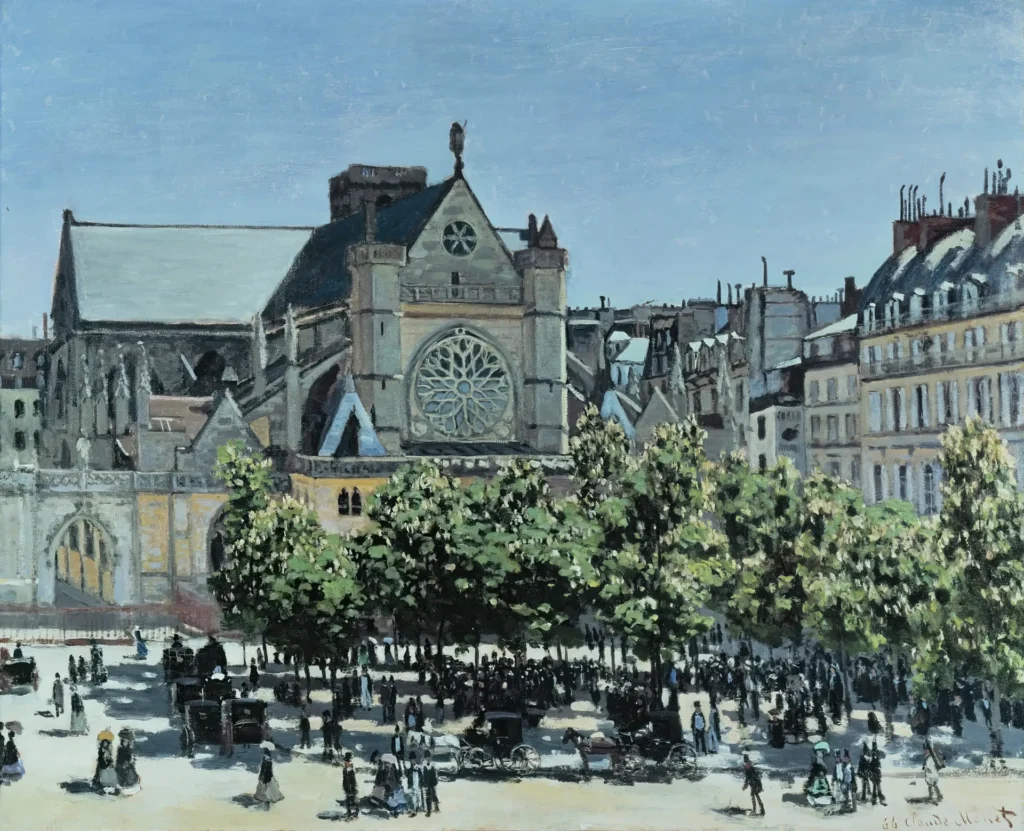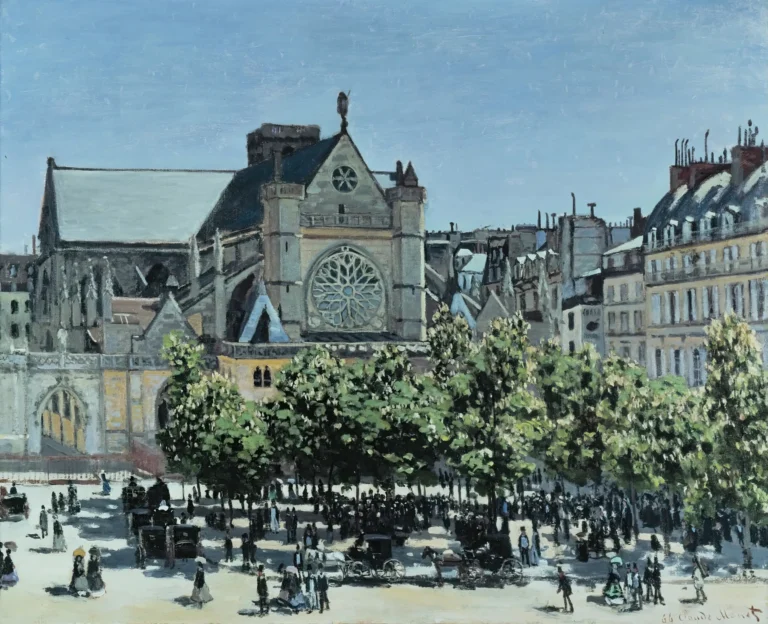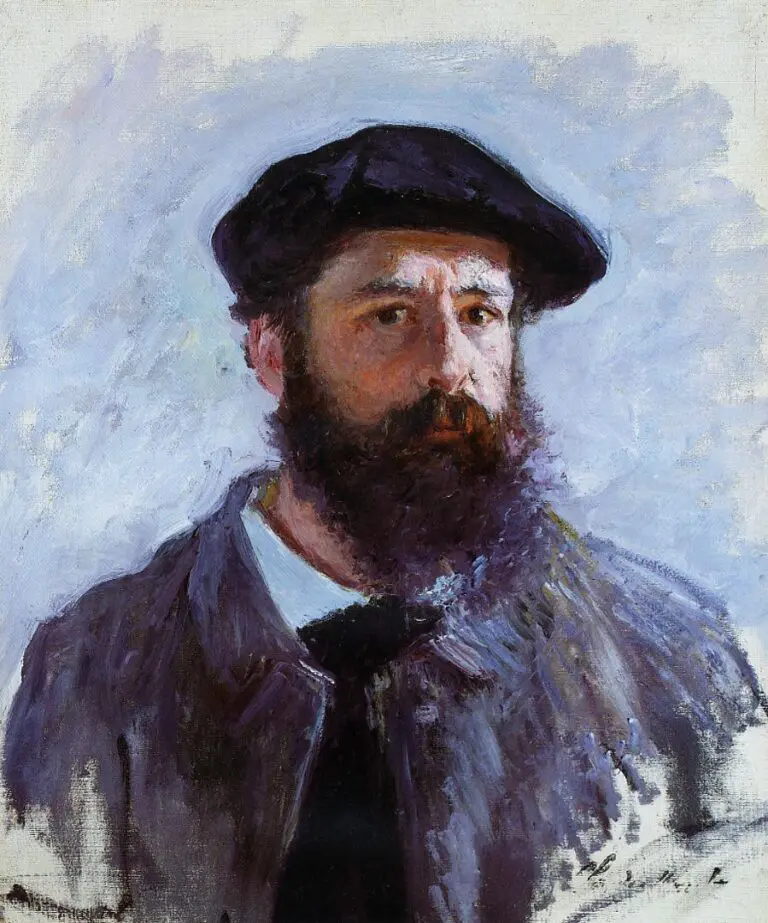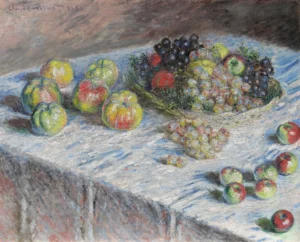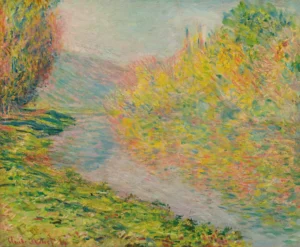St. Germain l’Auxerrois (1867)
Created in 1867, Claude Monet's St. Germain l’Auxerrois represents an evocative snapshot of Parisian urban life. This artwork showcases the artist's departure from traditional techniques, emphasizing dynamic brushwork and the interplay of light, typical of the Impressionist movement. The scene features the Church of Saint-Germain l’Auxerrois amidst a bustling square, bringing together architecture and everyday life in a harmonious blend of color and form.
Year 1867
About the Artwork
Did You Know
Liked what you see? Add it to your collection.
Enjoyed reading? Share it.
... continued
Date and Style
The painting was completed in 1867 and is characterized by the Impressionist style, marked by visible brushstrokes, an emphasis on capturing light and its changing qualities, and a focus on the overall impression rather than detailed realism.
Subject and Location
The painting depicts a lively urban scene centered around the Church of Saint-Germain l’Auxerrois in Paris, France. It shows the Gothic architectural features of the church, including the large rose window and intricately designed entrance, set against a bustling square with people, horse-drawn carriages, and tall trees. The scene is bathed in bright, dappled sunlight, conveying a sense of movement and vivacity.
Technique and Dimensions
The painting is executed in oil on canvas, measuring 79 cm in height and 98 cm in width.
Location and Collection
The painting is part of the collection at the Alte Nationalgalerie in Berlin, Germany, where it remains a testament to Monet's innovative artistry within the Impressionist movement.
Historical Context
In 1867, Monet and his contemporaries, including Pierre-Auguste Renoir, were developing the principles of Impressionism. This period saw Monet's works being rejected by the traditional art establishment, such as the Salon des Beaux Arts, due to their innovative and unconventional style. Monet painted this work from an elevated position in the columned passage of the Perrault Wing of the Louvre, which allowed him to capture the cityscape with a unique perspective.




